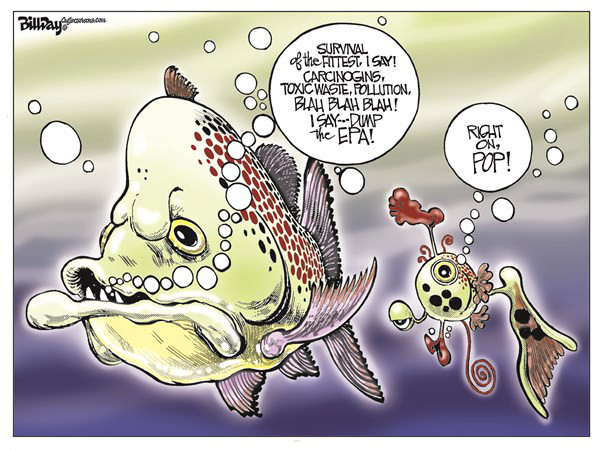Turning the Tide on Invisible Pollution
California's Next Governor Must Address Long-Ignored Water-Quality Issues

Over the course of 10 infamous days in January 1969, more than 80,000 barrels of crude oil gushed into the Santa Barbara Channel. The pollution fouled beaches from Goleta to Ventura and decimated marine life, killing animals as large as dolphins and sea lions.
The spill and other events that year like the Cuyahoga River catching on fire (again) triggered a wave of public outrage that rolled all the way to Washington, D.C., where it swept a number of pioneering environmental laws through Congress — laws that became the foundation of the environmental movement. California, and Santa Barbara in particular, has been at the leading edge of this movement from the beginning.
The state’s next governor will take office exactly 50 years to the month after the infamous 1969 oil spill. While we can celebrate a long list of conservation victories achieved since then and take pride in our well-organized (and ongoing) defense of California’s coastal waters from offshore drilling, our next governor will inherit a massive water pollution problem that has gone unaddressed for too long.
One of the biggest threats to California water is the challenge of managing a continuous flow of invisible “non-point source” pollution. There are two primary culprits: stormwater running off roofs, roads, and other hard surfaces, and nitrate pollution flowing off agricultural operations.
Locals know to avoid Sycamore, Mission, Arroyo Burro, and other Santa Barbara creeks after heavy rains. The rain carries oil, trash, bacteria, and chemicals into streams and out to sea, where they can harm marine life and render our beaches unsafe for swimming and surfing. A morning swim or surf session in polluted water is enough to cause serious health problems, including persistent rashes, lung infections, and gastrointestinal illness.
Our drought-prone state must do a better job of capturing rainwater before it becomes pollution. We can reuse it directly or allow it to filter into the ground to replenish our aquifers. Nature-based projects like rain gardens and wetlands capture and cleanse runoff. These cost-effective projects also deliver ancillary benefits, including park space, wildlife habitat, and urban greening.
While green infrastructure can reduce pollution, it is only a partial solution. We also need to strengthen our system for stopping contamination at the source. Agricultural runoff has become the most significant source of chronic pollution to many of our coastal streams. Farming is and will remain a central part of our economic and cultural identity, but progress can be made, as shown by the Carpinteria flower industry’s initiative to install recycling systems to reduce water consumption. UC Davis Center for Watershed Sciences estimates that more than 360 thousand tons of nitrates are leaching into groundwater supplies from California farms every year, contaminating the drinking water supplies for over a quarter million Californians.
California has some of the strictest water quality standards in the country; we simply fail to enforce them. Our next governor — and the State and Regional Water Board members they appoint — must address the way pesticides, fertilizer, and animal waste impact drinking water supplies, consistent with the “polluter pays” principle. By leading on storm water capture and water recycling, we can stretch water supplies and reduce polluted runoff.
California has a long track record of stepping up when our natural resources are threatened. Today that threat is significant, extending from our drinking water to our iconic coast, but we can rise to the challenge.
The 1969 oil spill defined Santa Barbara. Our longstanding conservation ethos traces back to that fateful January and the response of people across the country. We hope, someday, that we can also look back on January 2019 as a turning point in our state’s commitment to achieving swimmable, fishable, drinkable waters for all Californians.
Robert C. Wilkinson is adjunct professor at the Bren School of Environmental Science and Management at UCSB. Kira Redmond has served as Santa Barbara Channelkeeper’s leader since 2004. Das Williams is 1st District Supervisor for Santa Barbara County.



